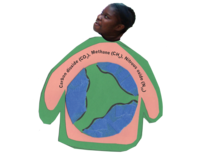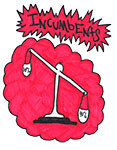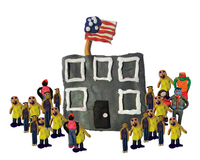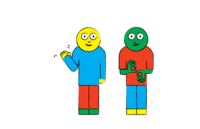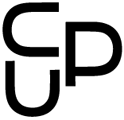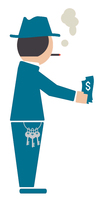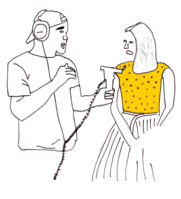‘Fast facts about ULURP’
Brooklyn Daily Eagle
March, 8, 2019
Another thing that triggers the ULURP process is a proposal from the Department of City Planning or a different city agency to change the zoning in an entire neighborhood.Big drama can break out when neighborhood residents object to ULURP plans. There’s fiery testimony at public hearings. Community groups organize protests.The ULURP process takes several months — and often upward of a year for larger projects.We’ve synthesized our description of how it works with the help of materials from the DCP’s website and the “What is ULURP? Guidebook,” published by the Center for Urban Pedagogy.
‘101 small ways you can improve your city’
Curbed
November, 2, 2018
Fix up your local park. Does barely functional equipment take the fun out of your local playground? Would new basketball courts or equipment make the park next door more enticing? To help guide those seeking to get their public parks in tip-top shape, the Center for Urban Pedagogy created a guide for building coalitions, activating the community, and petitioning local government for change. It’s New York-centric, but the lessons can be applied everywhere.
‘These might be the best-run nonprofits in New York’
NYN Media
October, 19, 2018
There are 20 finalists for the $100,000 Spark Prize. The Brooklyn Community Foundation announced which nonprofits were still in the running on Oct. 17, with the five winners to be named in January. In the meantime, the finalists will each get a $5,000 donation match during the upcoming #GivingTuesday. Read the full list of finalists here.
- Center for Urban Pedagogy (Brooklyn) uses the power of design and art to increase meaningful civic engagement, particularly among historically underrepresented communities. They are recognized for their practices in Fundraising, where they foster a culture of philanthropy among their staff.
‘Design Over Time: the Value of Case Studies’
AIGA
April, 13, 2018
Three of the case studies take place in the United States, including one from the Center for Urban Pedagogy that focused on rezoning, which has radically reshaped neighborhoods in NYC.
‘Zoning Game Lets Players Develop a 2,000-Square-Foot Lot’
Next City
April, 11, 2017
The tool comes from the Center for Urban Pedagogy (CUP) — the same nonprofit that urged designers working in cities to consider social impact and “not be a Dick.” CUP also broke down the “big picture” of NYC welfare, and created a game to help Harlem residents understand zoning and their rights.
‘A new tool teaches NYC developer lingo by making you an all-powerful urban planner’
Architect’s Newspaper
April, 4, 2017
Building on the What is Zoning? toolkit, CUP’s What is FAR? helps users get savvy with developer lingo—particularly the concept Floor Area Ratio (as readers may know, FAR determines the height and bulk of buildings). Language is power, and CUP, along with eight community partners, reasoned that it’s helpful for ordinary folks to speak the language of bureaucrats and capitalists when discussing changes in their neighborhoods.
‘America Has Its Problems, But Design Can Help Solve Them’
Wired
February, 1, 2017
Every designer brings personal experiences and biases to a project, but effective designers put them aside and strive to understand the people they’re working for. “How do you as a designer show up in a way that’s being an ally and an accomplice first?” says Gaspar of CUP.
A few years ago, Gaspar and her team were helping develop a pamphlet that would help public housing residents understand their rights. Her designer chose a particular shade of blue for the typography, which elicited a strong reaction from the community members. “They said, ‘You can’t use that color,’” Gaspar recalls. “That’s the color of the Housing Authority.” It was a simple mistake and easily rectified, because Gaspar’s team involved its constituents in the design process from the very beginning of the project.
‘What can we learn from lottery spending’
MIT News
January, 26, 2017
The City Digits: Local Lotto project is an ongoing collaboration with Laurie Rubel, associate professor of secondary education at CUNY’s Brooklyn College, and the Center for Urban Pedagogy, a Brooklyn-based nonprofit organization led by MIT architecture and urban planning alumna Christine Gaspar MA ’04 MCP ’04 that uses the power of design and art to increase meaningful civic engagement. The project has two goals: to develop and pilot innovative tools to help improve data literacy for high school students and to educate them about issues that directly affect their communities; and to examine the economic effect of the state-sponsored lottery on low-income neighborhoods in New York City.
‘Nueva guía para obtener acceso a vivienda popular’
NY1 Noticias
January, 12, 2017
“No es solo el problema de viviendas asequibles, sino también es el problema de mejorar las situaciones financieras de los neoyorquinos, y entonces de esa idea nació ese proyecto”, señaló Oscar Núñez, del Centro de Pedagogía Urbana.
‘Agencies Create New Guide on Steps to Take to Apply for Affordable Housing and Putting Together a Strong Application’
NYC Department of Housing Preservation and Development
January, 10, 2017
Based on the initial findings, HPD, DCA and the Center for Urban Pedagogy (CUP), with support from Citi Foundation and the Mayor’s Fund to Advance New York City, also created Ready, Set, Apply: Getting Ready for Affordable Housing in NYC (Spanish), a friendly and approachable guide outlining the steps to apply for affordable housing and how to prepare a strong application.
‘A punchy new guide from the Center for Urban Pedagogy shows architects how not to be Dicks’
The Architect’s Newspaper
July, 8, 2016
The Center for Urban Pedagogy (CUP) teamed up with the Equity Collective—Christine Gaspar, executive director of CUP; Theresa Hwang, founder and director of Department of Places; and Liz Ogbu, founder and principal of Studio O—and illustrator Ping Zhu to produce Dick & Rick: A Visual Primer for Social Impact Design, a gently didactic pictorial for architects on the dos and don’ts of community-engaged design.
As their names suggest, Dick is the Goofus to Rick’s Gallant. The 15-page spread walks readers through the design process in each architect’s respective office: In a stroll around the neighborhood, Rick spies a flier for a community meeting about parks, and wonders if he could lend his skills to the project. Dick reads a news piece about the same initiative and, pen aloft, offers help to “them.”
‘How East Harlem Wrote Its Own Development Plan’
Next City
June, 20, 2016
“We have a conversation about that, about the bad, the fears, some people bring up the potential benefits. In that Lincoln Houses workshop, and this has not been uncommon, I remember residents saying no, that means the neighborhood is going to change,” recalls Haftel, a former curator for the Chicago Architecture Foundation. Haftel had been looking for a way to merge her love of art and design with her interest in urban justice and housing issues when she met CUP’s director, who was in Chicago for a meeting with community groups about adapting the group’s affordable housing workshop for use in their city.
